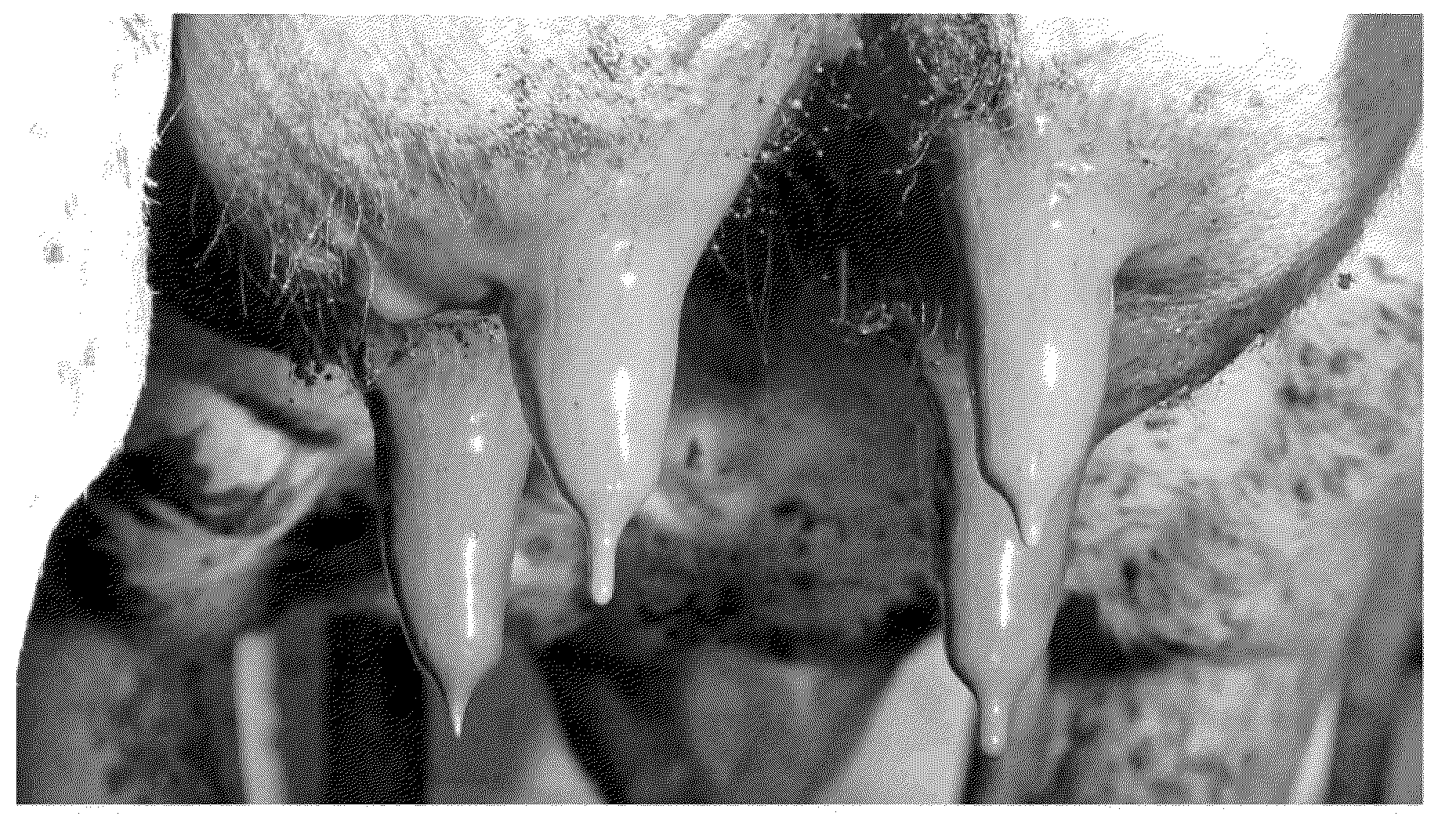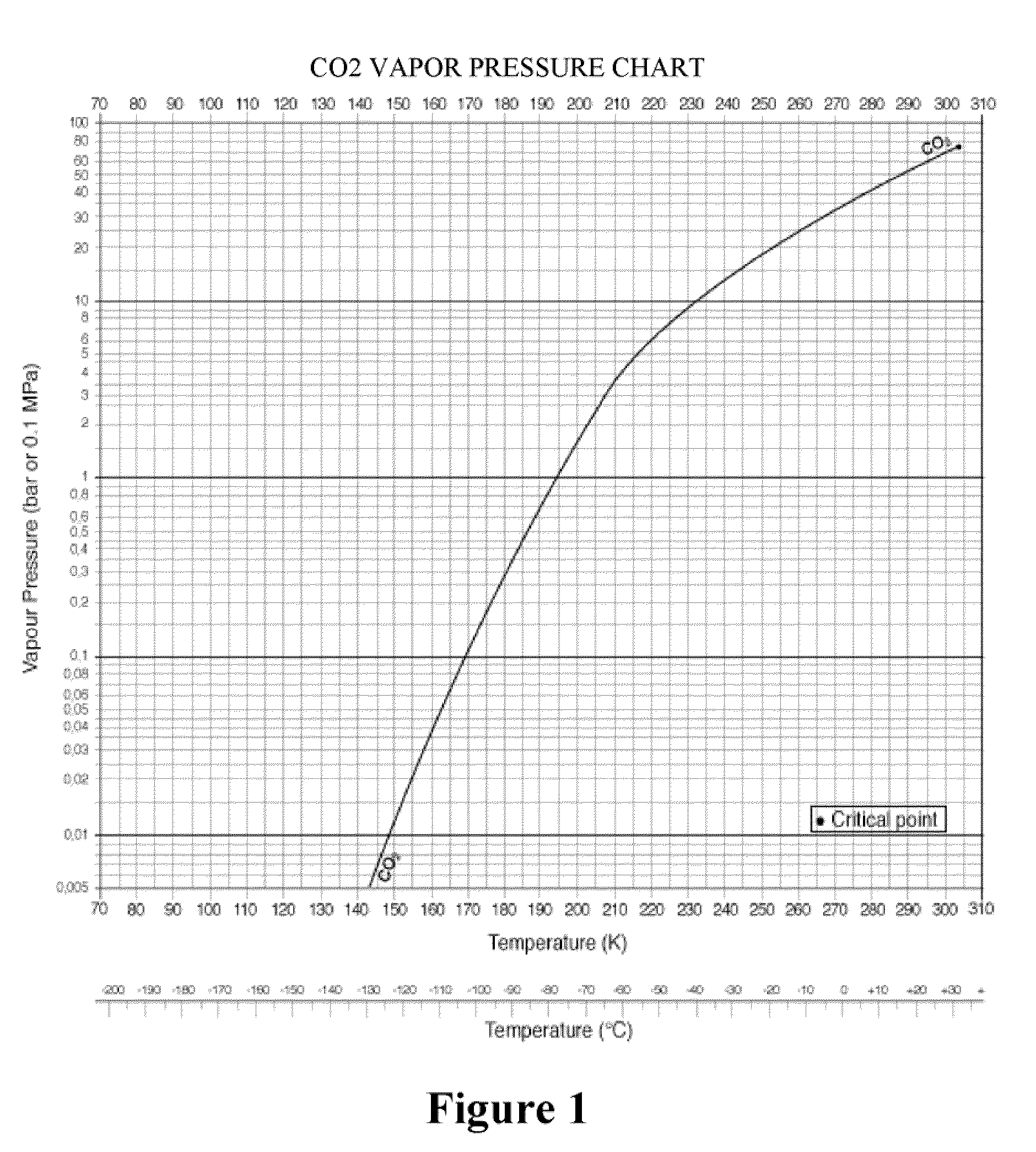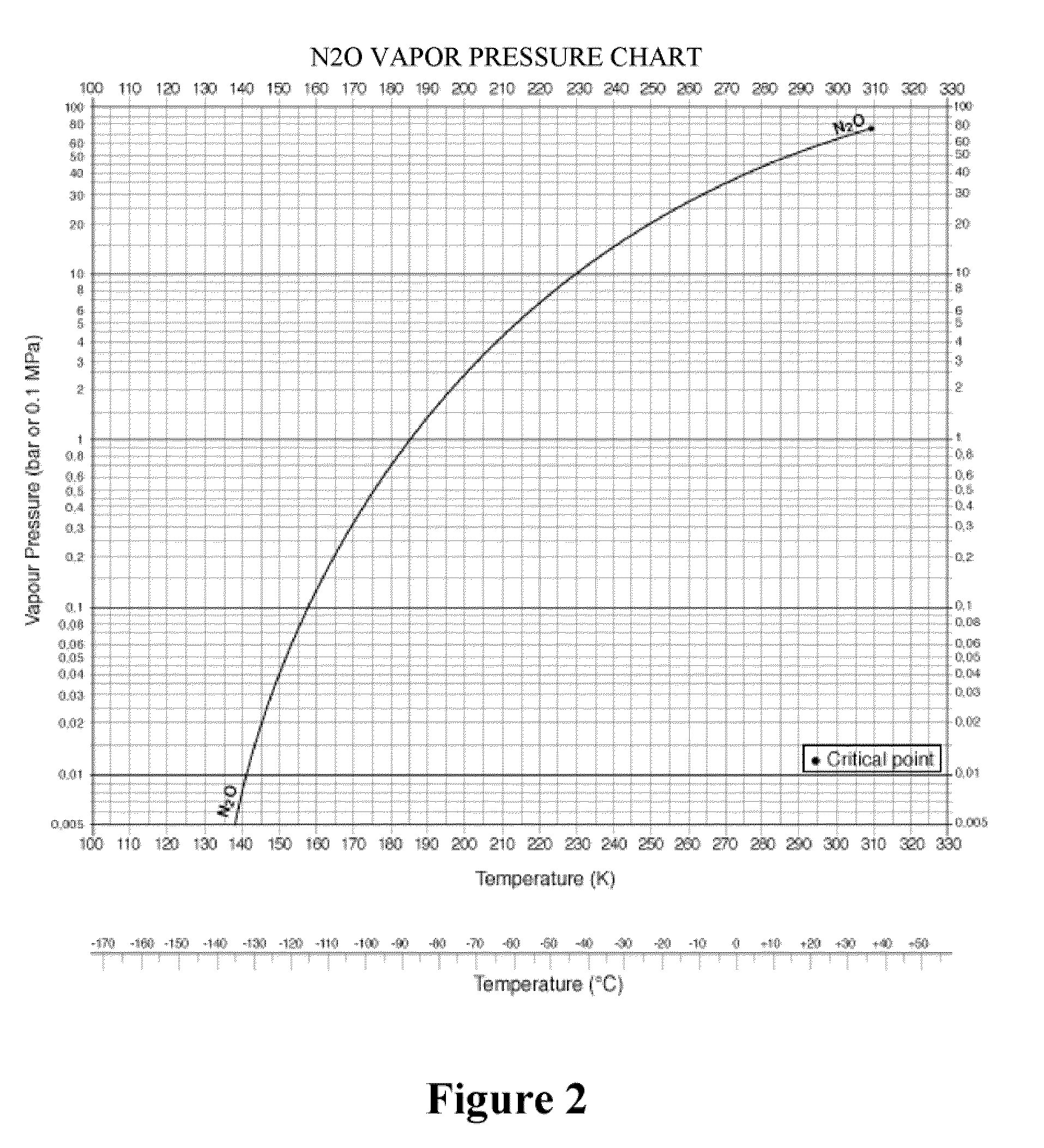System and method for the delivery of a sanitizing foam
a technology of sanitizing foam and spray, which is applied in the direction of aerosol delivery, packaging goods type, volume measurement, etc., can solve the problems of increasing the length of time of teat exposure avoiding the risk of cross contamination, and increasing the exposure time of teat to the sanitizing agent. , to achieve the effect of small gas bubble size, avoiding cross contamination, and increasing the exposure time of tea
- Summary
- Abstract
- Description
- Claims
- Application Information
AI Technical Summary
Benefits of technology
Problems solved by technology
Method used
Image
Examples
example 1
Liquid Spray
[0065]Tests using the liquid spray delivery (FIG. 6) vs. the foam showed a reduction in dip usage for comparable teat coverage. When the liquid spray valve opening time was set at 0.2 second the coverage on the gloved finger with the liquid spray matched coverage on the gloved finger with the CO2 / N2O foam and a 0.1 second spray valve opening time. However, by opening the spray valve for twice as long for the liquid spray much more (approximately 266 mL) dip solution was used compared to the 120 ml used to create the foam. The resulting usage of dip solution with the liquid-spray method exceeded the amount used for spray that resulted in foam, or the foam in the cup method. The majority of the liquid on the gloved finger had dripped from the teat within 5 seconds. FIG. 6 shows a picture of liquid spray directed onto a gloved finger. In this figure, air is used as the motive force to drive the dip through the nozzle to the teat.
[0066]It is noted that when the air propellan...
example 2
Use of CO2 to Generate Foam
[0072]The system 100 (FIG. 3) used in Example 1 is tested with CO2 as the propellant / diffusion gas in order to test the expanding spray. The resulting carbonated spray expands to approximately 3 mm in diameter in approximately 0.5 seconds, where the individual bubbles in the resulting foam varying in size from approximately 10 microns to approximately 100 microns. The foam bubbles coalesce in approximately 5-10 minutes (as shown in FIG. 7). After coalescing, the liquid drips from the teat and the remaining liquid dries on the teat.
[0073]The system (FIG. 3) was used with CO2 as the propellant / diffusion gas using a variety of teat dip solutions from different manufacturers as well as different dip formulations from the same manufacturer. All dip solutions yielded similar results. Some produced different foam characteristics than others. In all of the dip solutions tested, the gas diffused foam gave better coverage, remained on the teat longer and used less d...
example 3
Use of N2O Spray to Generate Foam
[0074]The system (FIG. 3) was used with nitrous oxide as the propellant / diffusion gas. In an embodiment of the invention, nitrous oxide (N2O) can be used as a propellant / diffusion. N2O is partially soluble in water, but is almost completely soluble in fats and oils (the skin conditioner provided in the cow dip). Under standard room temperature and 100 psi pressure, approximately four volumes of N2O can be dissolved in one volume of the dip solution. The resulting nitrous oxide foam expands to approximately 6 mm in diameter, where the individual bubbles in the foam vary in size from approximately 1 micron to approximately 10 microns. These bubbles coalesce in approximately 10-15 minutes (as shown in FIG. 8). After coalescing, the remaining liquid dries on the teat. It is noted that the amount of N2O that can be dissolved in one volume of dip solution will increase if more conditioners (containing one or more of fats, oils, fatty acids and triglyceride...
PUM
| Property | Measurement | Unit |
|---|---|---|
| distance | aaaaa | aaaaa |
| distance | aaaaa | aaaaa |
| time | aaaaa | aaaaa |
Abstract
Description
Claims
Application Information
 Login to View More
Login to View More - R&D
- Intellectual Property
- Life Sciences
- Materials
- Tech Scout
- Unparalleled Data Quality
- Higher Quality Content
- 60% Fewer Hallucinations
Browse by: Latest US Patents, China's latest patents, Technical Efficacy Thesaurus, Application Domain, Technology Topic, Popular Technical Reports.
© 2025 PatSnap. All rights reserved.Legal|Privacy policy|Modern Slavery Act Transparency Statement|Sitemap|About US| Contact US: help@patsnap.com



